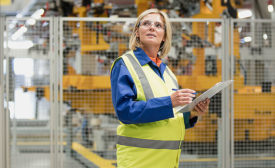Risk Management
Identify, assess, and control occupational hazards to protect your workers and your business.
ARTICLES
Attribution — A hidden risk factor
Personal behavior affects situational observations
October 19, 2024
Risk management challenges: Safety is in the eye of the beholder
Some see danger where others are happy to take the risk
October 17, 2024
Supply chain security in a digital age
Technology can bring threats, but also offers solutions
October 2, 2024
Why risk assessments are not required by the PWFA
Bias, various interpretations create differing opinions
September 5, 2024
A look into safety management
Unveiling the flaws in traditional approaches and OSHA standards implementation
April 16, 2024
Never miss the latest news and trends driving the safety industry
eNewsletter | Website | eMagazine
JOIN TODAYCopyright ©2024. All Rights Reserved BNP Media.
Design, CMS, Hosting & Web Development :: ePublishing












